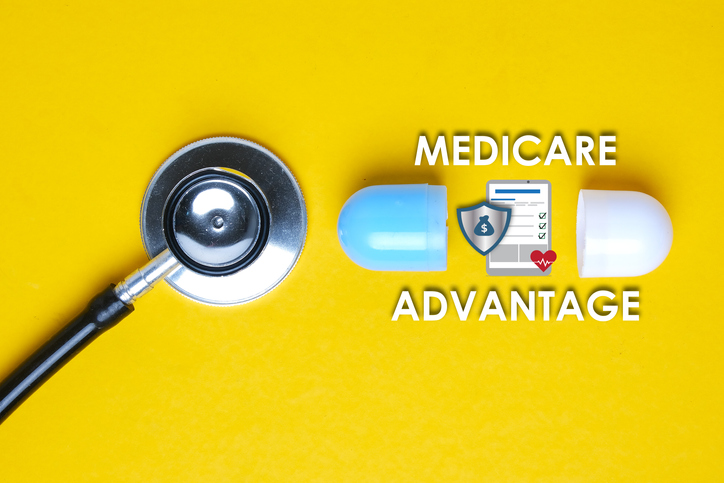Why am I seeing all of these commercials about Medicare, and do I need to do anything about it?
Information Overload
Learning about Medicare can be a lot like drinking from a firehose, especially if that firehose shoots out alphabet soup instead of water. Part A, Part B, Part C, Part D, Plan G, AEP…!
Confused yet? I would be surprised if you weren’t.
Many people think that when they finally turn 65 and put their initial enrollment periods for Medicare in the rear-view mirror, they won’t have to worry about healthcare coverage decisions anymore. Fast forward to October 15th, the start of Medicare’s Annual Enrollment Period (AEP) every year, when countless commercials appear on television, advertising plans that have benefits they may not even have known were possible, and they realize that is not quite the case. These commercials continue their siren song all through the fall until December 7th, the close of AEP.
Those Darn Commercials
Joe Namath: Hall of Fame quarterback, occasional actor, and Medicare expert? Well, maybe not quite the last one there, but he does make appearances in those Medicare commercials every fall. I can’t even count the number of people who have called me wanting to talk about Medicare plans because they saw “that commercial with Joe Namath on it,” and he’s not the only big name out there. George Foreman, Jimmie Walker, and William Shatner are just a few more on the list of famous people who are brought in to endorse third-party marketing agencies offering Medicare Advantage plans.
Now I want to clarify: paid spokespersons are not necessarily a bad thing. They are a dime a dozen in any sales-related field, but it is important to understand what it is they are endorsing and the pros and cons of any such product.
Each fall I see tons of commercials advertising money back on your Social Security checks, rides to and from doctors’ appointments, dental and vision benefits, and more. While there certainly is some truth to the commercials, and these plans absolutely do exist, they don’t quite tell the whole story. While they may include some text on the screen so small that you can hardly read it without a magnifying glass, they don’t explain well enough that the availability of such plans is determined by your zip code or the true cost behind those low premiums.
Under the Magnifying Glass
For starters, if you live in a large metropolitan area, odds are you have more than fifty plans available in your area, they may be pretty competitive, and they may offer benefits like those mentioned in the commercials. If you live in a more rural area, odds are you have less than half of that number, and they are substantially less competitive. Benefits like adding money back to your Social Security check are usually only available with a select group of plans, if any, in your area. Advertised dental and vision benefits often cover only preventative services or a minimal amount of less-routine work.
The next big thing to remember is that the vast majority of commercials for Medicare-related services are for Medicare Advantage plans (aka Part C), which is separate from, and a replacement for, Original Medicare (Parts A+ B) and Medicare supplements (optional add-on coverage to Original Medicare). Oftentimes the Medicare Advantage plan offerings with the lowest advertised costs are Health Maintenance Organizations (HMOs) rather than Preferred Provider Organizations (PPOs). HMOs generally require that you stay within a network of providers and hospitals in order to have coverage, whereas PPOs allow you to go outside of the network if you’re willing to pay a bit more in copays. When I was actively working in the Medicare Advantage ballgame, the network restrictions in HMOs were generally the number one concern my clients had. By comparison, 97 percent of doctors accept Original Medicare, and you can see any of them with Original Medicare and a Medicare Supplement policy.
Even when you’re working within a network, sometimes you’ll be fighting an uphill battle. Medicare Advantage plans are run by private insurance companies and are not a part of a public health care system like Original Medicare. While it may sound like splitting hairs, it really is an important distinction. In non-emergency settings, most Medicare Advantage plans require prior authorization from the plan before many forms of treatment can occur. Prior authorization requirements can sometimes leave beneficiaries feeling like they have to fight with their insurance company to get the services their doctors recommend. The commercials don’t usually mention that.
My biggest concern, however, is not about the extra benefits provided (or not provided in many cases) or even the networks, but rather about the actual medical coverage. At the end of the day, this is your health insurance, and even if it provides some extra bells and whistles, how well does it cover you when you really need it? Again, it will depend on your zip code and the plan offerings in your area. Medicare Advantage Plans in 2022 were able to have a maximum out-of-pocket of $7,550 for in-network care and $11,300 for combined in- and out-of-network care. The average out-of-pocket maximum was $4,972 for in-network care and $9,245 for combined in- and out-of-network care. That means in a high-use year, you could be on the hook for about $5,000 worth of out-of-pocket costs on average with a Medicare Advantage plan. Funnily enough, the commercials don’t usually mention that either.
Who’s It For Then?
While Medicare Advantage Plans may not be the greatest thing since sliced bread like the commercials want you to think, they’re not all bad either and can still be a good option for the right person. Healthy years with low premiums can allow beneficiaries to save money that would have been spent on a Medicare Supplement premium and build up a slush fund for when the rainy day does eventually come. Occasionally plans can be incredibly competitive and in rare circumstances even have out-of-pocket maximums lower than a Medicare Supplement annual premium. As we saw earlier in the average numbers though, that’s the exception rather than the rule.
The clients I have seen in the past who are happiest with Medicare Advantage are those who live in large urban areas, who do not mind network restrictions, and who have a sufficient slush fund to pay for the out-of-network expenses if they arise. If you tick some or all of those boxes, it could be a worthwhile consideration this fall. I have seen plenty of clients go onto Medicare Advantage plans and still love their plan at the end of the year, but it is integral to understand the plan and to make the decision to enroll on the basis of the medical coverage rather than the extra benefits you’ll hear touted in commercials this fall.
I’ve included a few resources I strongly recommend reviewing prior to talking with any Medicare Advantage plan agents, captive or independent. First and foremost, after October 1st, Medicare.gov’s plan finder tool will show you all of the plans available in your area for 2023. Also, if you live in North Carolina, consider making an appointment with a Medicare and Seniors’ Health Insurance Information Program (SHIIP) counselor. SHIIP counselors are not agents and do not endorse any particular plans. As a former Medicare Advantage and Prescription Drug Plan agent myself who no longer sells the plans, I would also be glad to help answer your questions. It is time to feel empowered enough to turn off the commercials this fall and have confidence that you are getting the plan that is best for you, not just one that an athlete or celebrity recommends.
Jacob Yocco, CFP®







